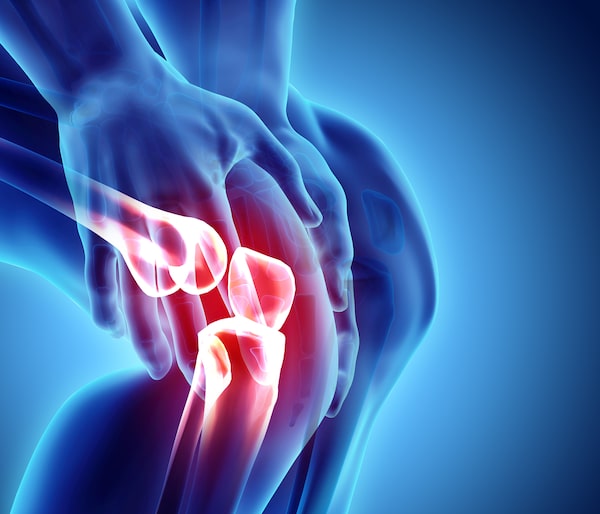
It’s long been clear that there’s more to osteoarthritis than just how much load you put on your joints.yodiyim/iStockPhoto / Getty Images
Every runner has heard the warnings: Keep pounding the pavement, and you’ll end up with osteoarthritis, the debilitating chronic condition that supposedly results from “wear and tear” on knees and other joints.
But over the last decade, scientists have dramatically shifted their view of what causes osteoarthritis, which is the top contributor to disability around the world. At the joint annual conference of the International Society of Biomechanics and the American Society of Biomechanics in Calgary earlier this month, researchers debated the contribution of other factors such as inflammation, fat, muscle tissue and even gut bacteria in the progression of the disease, leading to some surprising new ideas on how it might be prevented and treated.
It’s long been clear that there’s more to osteoarthritis than just how much load you put on your joints, says Kelsey Collins, a postdoctoral researcher at Washington University in St. Louis and co-chair of a conference session on the topic. For example, while the close link between obesity and knee osteoarthritis fits with the wear-and-tear picture, heightened load doesn’t explain why people with obesity are also twice as likely to have osteoarthritis in their hands.
When Collins and her colleagues sifted through data from 2,500 respondents to the Canadian Health Measures Survey, they found that body fat percentage was a better predictor of osteoarthritis than body mass index. In other words, extra weight alone wasn’t the main problem. Instead, excess fat tissue secretes hormones that trigger low-level inflammation elsewhere in the body, including in the joints where researchers now suspect it may contribute to cartilage breakdown.
Inflammation from other sources may also cause trouble. For example, one of the best predictors of osteoarthritis is a previous acute knee injury such as an anterior cruciate ligament (ACL) tear, presumably because the loss of joint stability creates abnormal loads on the knee.
Oddly, though, studies have found only weak evidence that patients who have their ACL surgically repaired after a tear have a lower risk of osteoarthritis compared to those who don’t get surgery. One possibility: Rather than loss of joint stability, the problem is minor cartilage or bone damage that occurs during the initial accident, which triggers an inflow of inflammatory molecules that try to repair the damage. In some cases, this inflammation may become chronic, leading to further joint degradation, which eventually results in osteoarthritis.
If this picture is correct, then one of the simplest countermeasures available is exercise, which may lower your risk of an initial knee injury such as an ACL tear, and helps reduce systemic inflammation regardless of whether you lose weight. That even applies if you already have osteoarthritis, to the extent that you’re able to tolerate exercise. Collins points to a program called GLA:D Canada, which offers education and training on how to exercise for patients with knee or hip osteoarthritis.
At the biomechanics conference, University of Colorado orthopedics specialist Michael Zuscik also presented data on a more unexpected source of inflammation: gut bacteria. High-fat and high-sugar diets trigger a shift of the composition of microbes in the colon that can raise the risk of “leaky gut,” in which gut microbes escape into rest of the body and trigger an inflammatory response.
In research published last year in the Journal of Clinical Investigation Insight, Zuscik and his colleagues found that giving obese mice a non-digestible prebiotic fibre called oligofructose was able to favourably alter their gut flora and protect them from osteoarthritis, opening up a promising avenue for potential studies in humans.
More immediately, Zuscik says, some simple diet changes may help. That means less fat and refined sugar, and more of the foods that inflammation-fighting gut microbes thrive on: vegetables, fruit and “complex plant-based carbohydrates” – in other words, fibre.
Ultimately, there may never be a single pill that cures all forms of osteoarthritis. After all, Collins point out, it’s really an umbrella term for many different subconditions: The best countermeasure for someone who develops it after an ACL tear may be quite different compared to someone who is obese or has a strong family history of the disease.
But there is one firm conclusion we can take away from the revised understanding of osteoarthritis: Overusing your joints is not the problem. If anything, it’s the opposite – so keep running.
Alex Hutchinson is the author of Endure: Mind, Body, and the Curiously Elastic Limits of Human Performance. Follow him on Twitter @sweatscience.
Live your best. We have a daily Life & Arts newsletter, providing you with our latest stories on health, travel, food and culture. Sign up today.